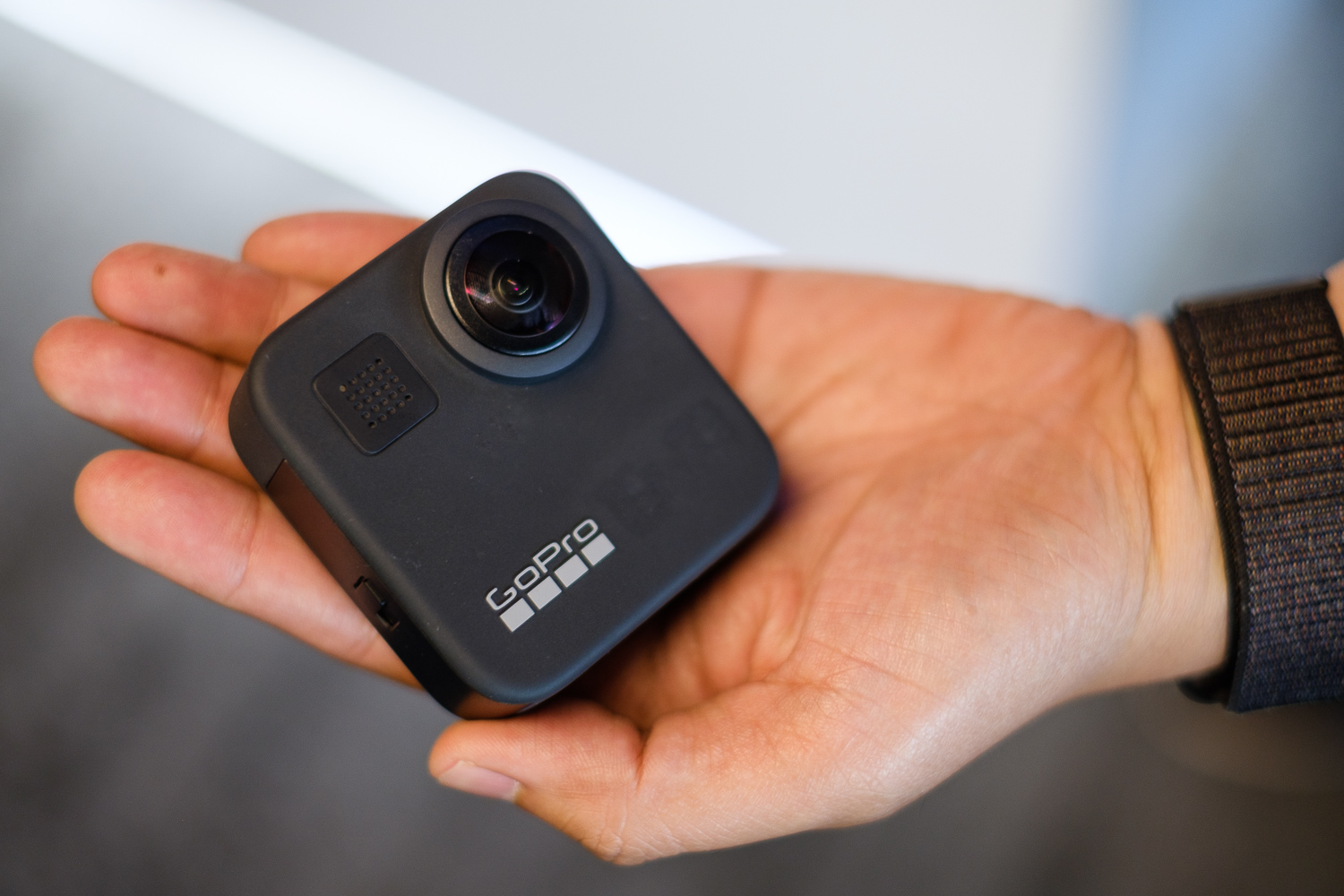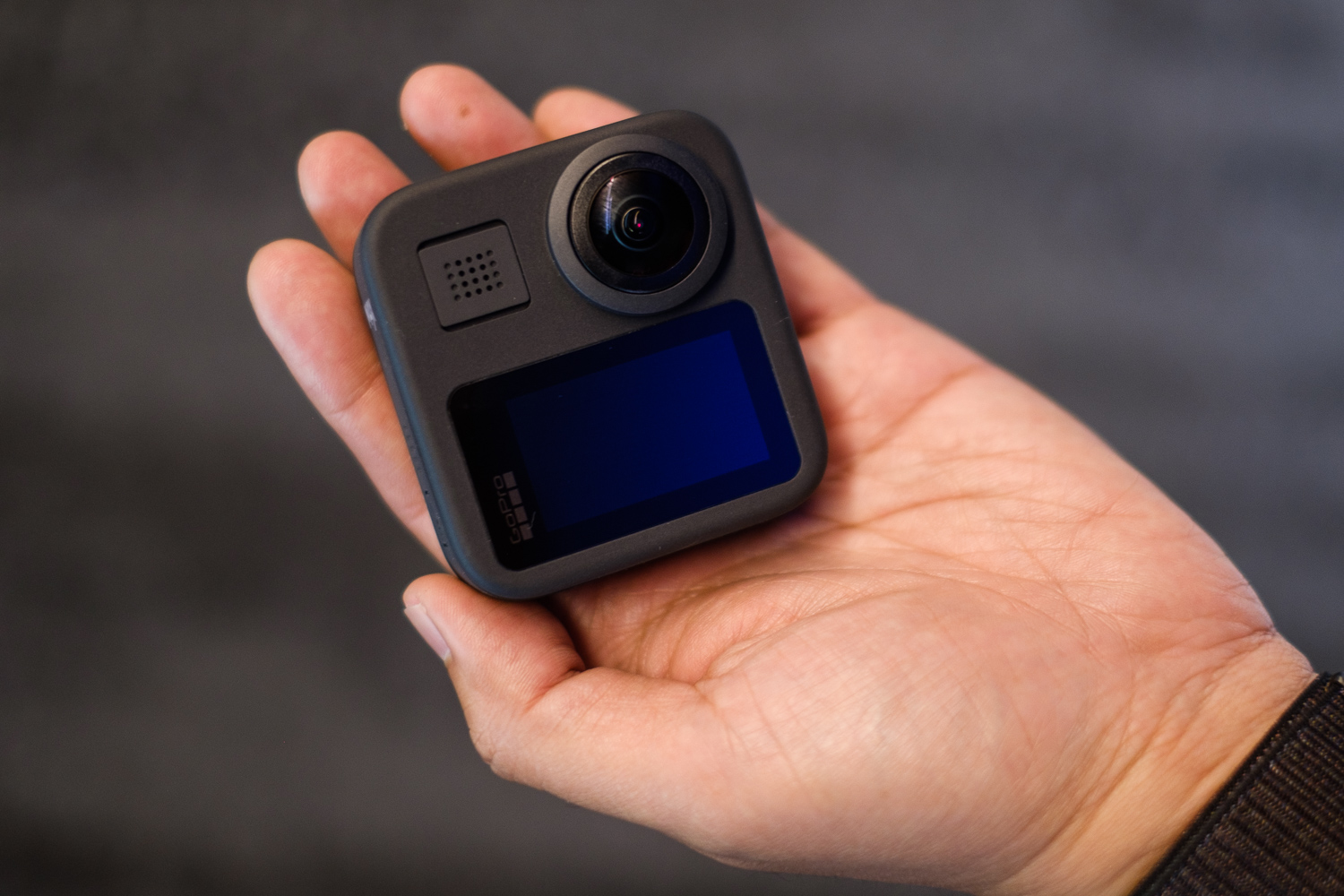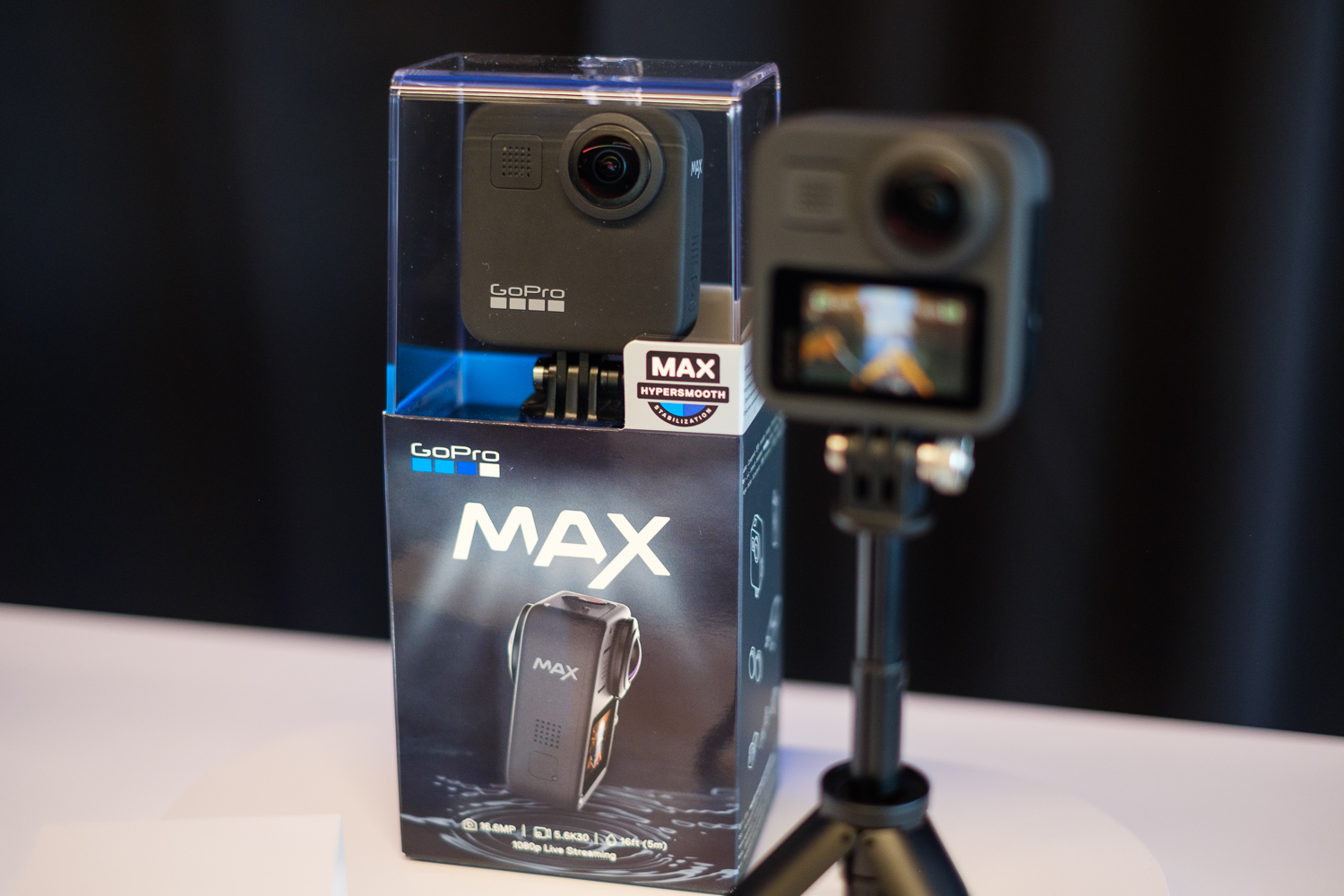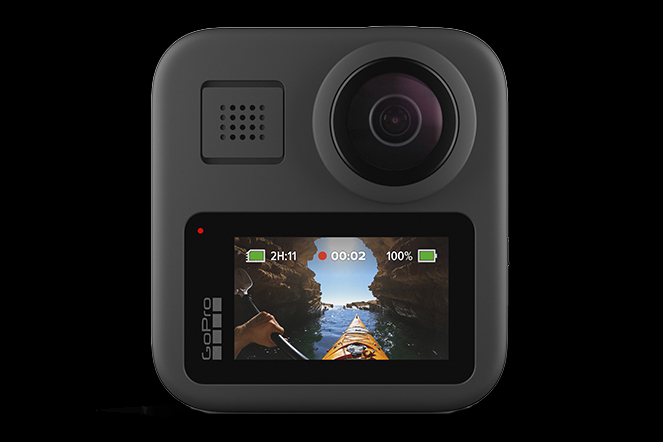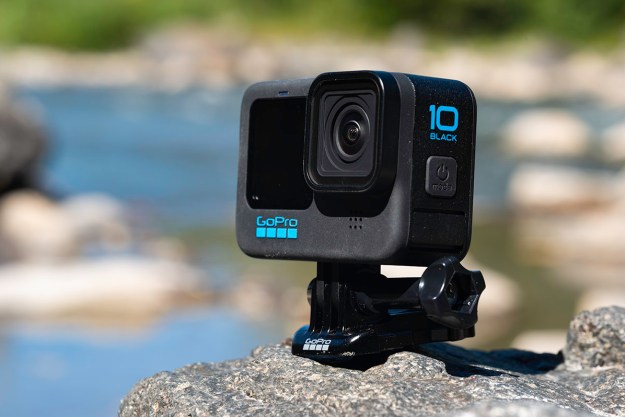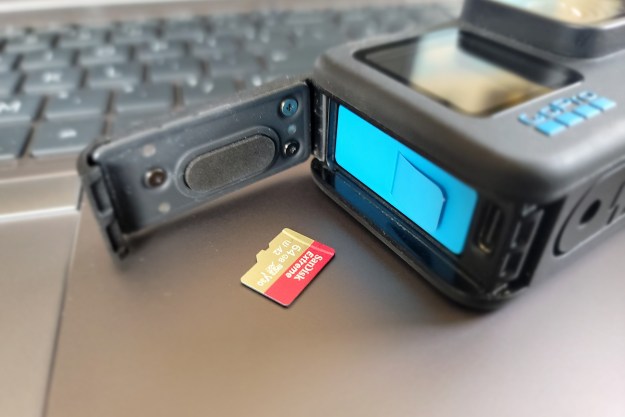GoPro is simplifying its 360-degree action camera. The GoPro Max, announced on October 1 alongside the new GoPro Hero8 Black, is a streamlined 360-degree camera that also doubles as a plain single-lens action camera and a rear-facing vlogging camera. GoPro’s latest attempt at a 360 camera is even more geared toward the average user, with in-camera stitching, a smaller body, and a lower price than the Fusion.
While at first glance, the GoPro Max looks like the boxy Fusion, the company’s prosumer 360 camera that launched in 2017, the Max has several changes starting with a smaller body. Despite shrinking the camera, the Max includes a touchscreen at the rear of the camera. The two lenses can shoot together for 5.6K 360 video at 30 frames per second (fps), or independently at 1440p.
Besides increasing the ease-of-use, the screen also allows the rear-facing camera to be used solo for vlogging. The front camera can also be used independently as a plain action camera, or, of course, both cameras working together for a 360 view. Digital lenses — i.e., in-camera cropping — expand Max’s use as a single-lens camera, including a mode that allows for the widest lens yet on a GoPro: Max SuperView, a 13mm-equivalent field of view. The digital lenses also include 16mm wide, 19mm linear, and 27mm narrow views.
The Fusion used two separate MicroSD cards, one for each lens, but the Max stitches 360 footage in-camera and stores it on a single card. Using the GoPro app, the footage can then be reframed and edited, including a new option to edit with keyframes. Max will also stitch 270-degree panoramic images in one click.
The Max also upgrades the stabilization with the next generation of HyperSmooth, called Max HyperSmooth. The stabilization system will now also keep the horizon level, as well as smoothing out the footage.
The new camera also includes a time-lapse mode, vertical video, and 1080p livestreaming capabilities. Along with the two lenses, the Max is equipped with six microphones for immersive audio.
Of course, because a GoPro, the Max is designed for action, the 360 camera is waterproof down to 16 feet. Protective lenses are included for the roughest conditions.
360 cameras likely haven’t spread as widely as many manufacturers had hoped, partially because the scenes that really need that immersive view are limited. While the biggest change is the screen and in-camera stitching, that touchscreen allows GoPro to tout the camera as a three-in-one, which may entice more buyers than a camera designed exclusively for immersive content. 360 cameras with a built-in screen are also rare, and eliminate the pain of connecting to a smartphone app just to adjust settings and preview the shot.
The GoPro Max is available for pre-order for about $500, with shipping expected to begin on October 24. That’s a $100 price drop from the original price of the Fusion — though it’s worth noting the older 360 camera can now be picked up for around $300.
Editors' Recommendations
- The 15 best GoPro accessories in 2024
- Why I fell in love with action cameras in 2022, and what I think comes next
- Apple M2 Pro and M2 Max MacBook Pro just received some good news
- GoPro takes to the skies with the Hero10 Black Bones
- ReelSteady makes GoPro Player ‘reel’ useful for filmmakers

